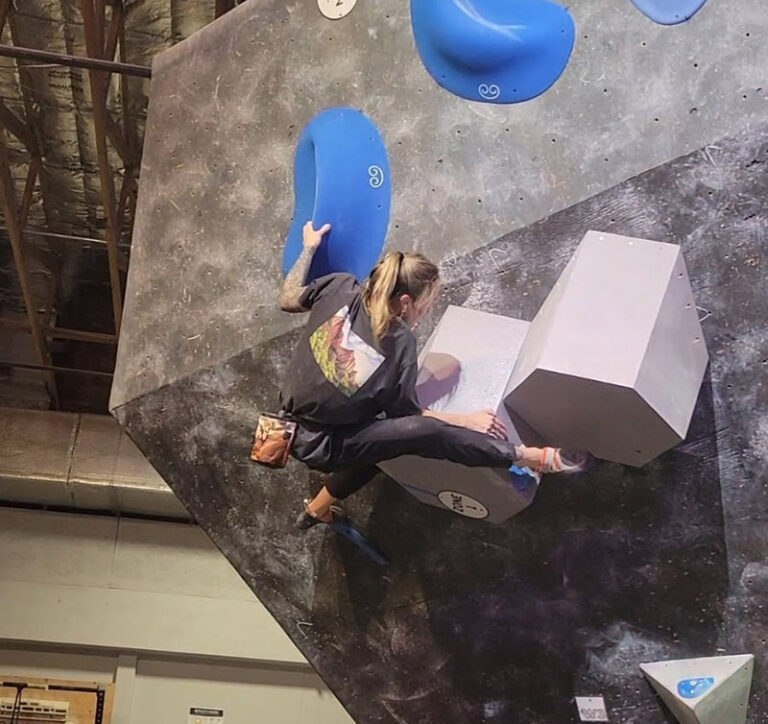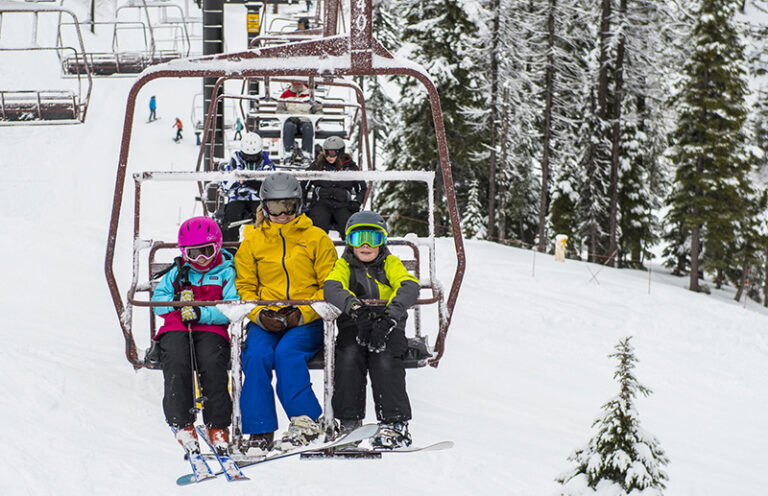What would you do if you came face to face with a grizzly bear? You may have just a second to react—like 0.7 seconds if the bear is 30 feet away and charges.
Bears are often around in the forest, whether you know it or not, according to Chuck Bartlebaugh, Director of Be Bear Aware. Chances are they will keep their distance. Yet grizzly territory is expanding, in part, because of our expanding human presence with rural development and a steady rise in outdoor recreation. This means encounters with potentially dangerous wildlife are on the rise.
“In 2018 grizzly bears have been spotted in areas they haven’t been seen in for fifty to a hundred years,” Bartlebaugh says. His longstanding Montana-based organization seeks to “empower people to share bear avoidance, wildlife stewardship, and bear spray information with the public.”
It’s one thing to have bear spray; it’s another to know how and when to use it or to be able to reach it quickly. “There’s a lot of misinformation out there,” warns Bartlebaugh. For example,”Spraying a charging bear at 30 feet away is too late,” he says. Instead, 60 feet is the key distance to remember, despite what popular wisdom maintains or the conflicting instructions on various sprays claim.
Bob Legasa, a hunter from Hayden, Idaho, recently survived a dawn grizzly attack in Montana thanks to his friend’s steady stream of bear spray. His biggest regret was keeping his own canister too far away on his hip, instead of on the front of his belt where it would have been more quickly reached.
Be Bear Aware’s educational materials are the result of 40 years of in-depth interviews with survivors of bear attacks and encounters. Their presentations are made “in participation with state and federal wildlife agencies, numerous outfitting and guiding associations, backcountry horsemen, hikers, campers, hunters, and fishing enthusiasts.”
Making noise or yelling constantly is not necessary. “Do not yell ‘Hey bear ho bear,’ unless you actually see a bear,” Bartlebaugh says. That phrase should alert people that a bear is truly nearby. Still, it is important to make your presence known when hiking in areas with limited visibility. You should speak in a “middle-tone voice,” say something like, “Coming down the trail,” or, “How you doing?”
It is also crucial to purchase official EPA approved bear spray, and keep it within reach. If a bear charges you or your group, spray a full steady spray at 60 feet and keep spraying until the bear contacts the cloud, diverts the charge, and runs away. Bear spray has saved lives even when deployed at point blank range.
The consequences of a bear encounter can be grim. This past November in Yukon Territory a grizzly mauled to death a mother, Valerie Theoret, and her 10-month-old daughter while they were out for a walk. The husband, Gjermund Roesholt, after checking his trap lines, encountered the bear. He shot it dead when it charged him. He then discovered his family already fallen victim outside their cabin. It is not yet known whether the mother had bear spray.
Sometimes attacks are survivable. In May 2018, Amber Kornak, a U.S. Fish and Wildlife seasonal assistant, was checking a snare site when she surprised a sleeping grizzly. The bear attacked her instantly. She survived only by spraying the bear directly in its face, spraying herself in the process. Although the bear’s teeth punctured her skull, she escaped and hiked two miles to her vehicle.
Be Bear Aware teaches people how to tell if a bear is in the vicinity before you see one, which is a critical piece of bear avoidance. For example, hiking after sunrise and stopping before sunset is strongly advised. Also, children should stay close to their parents—especially small children.
Bartlebaugh points out that it’s not just bears that we need to be aware of. “Cougars, rattlesnakes, and moose can be dangerous at times,” he says.
“In Alaska we had a bear run past us—it was being chased by a moose and took shelter behind us. And so the bear and all of us—about 20 people—we all just stared at this moose! Thankfully, the bear ran off when the moose went the other direction.”
Be Bear Aware will be sharing their expertise at the Spokane Great Outdoors and Bike Expo February 23-24. They offer educational courses to groups of all ages. Visit their website at www.bebearaware.org.













